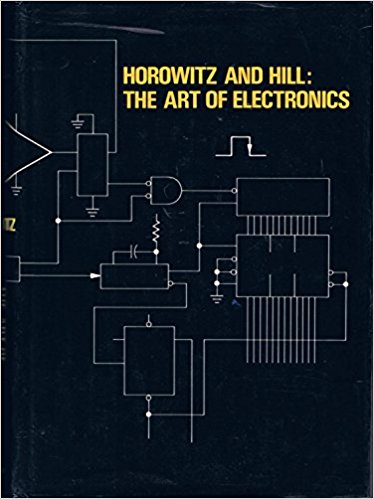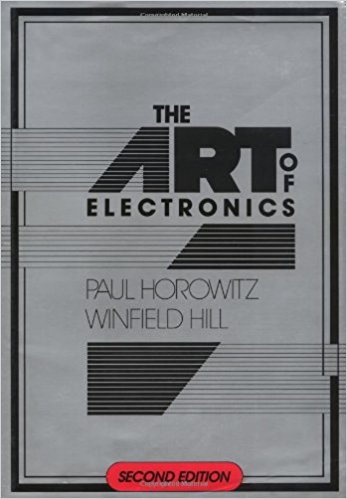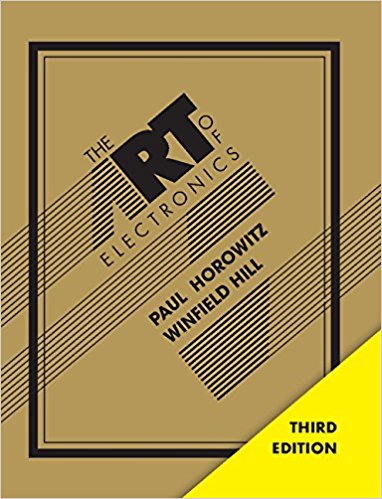Staff Information
Professor Doug Harper, Instructor
- KTH 2014, 745-6194
- Electronic Mail: doug.harper at wku.edu
- Homepage: physics.wku.edu/harper/
- Office Hours: Use calendly.com to schedule an appointment.
Course Description
Laboratory experiments in fundamental techniques of electrical measurements.
Prerequisites
PHYS 265/266 – University Physics II Lecture and Laboratory
Textbook
Optional: Learning the Art of Electronics, by Thomas C. Hayes, Cambridge University Press, 2016.

Learning the Art of Electronics, A Hands-On Lab Course is a unique introduction to both analog and digital circuit design. It has evolved over a 25 year period from a laboratory course taught at Harvard University. We will focus on the analog portion of the book. Each experiment is divided into four sections:
- N – Notes: A complete set of notes describing new topics and new circuits. You should thoroughly read and study these notes period to coming to lab.
- L – Lab: A set of laboratory exercises. We will perform a selection of these exercises in our course.
- S – Supplementary Material: A set of material that is essentially optional. You should look at the topics and decide if you wish to read this material.
- W – Worked Examples: A set of worked problems. You will likely find many of these very useful for your pre-lab and in-lab work.
Learning the Art of Electronics is available at Amazon.com or the WKU Bookstore (ISBN-13: 978-0521177238, ISBN-10: 0521177235).
Optional: The Art of Electronics, by Paul Horowitz and Winfield Hill.
Our text is actually the student lab manual to a more comprehensive treatise on electronics called The Art of Electronics by Horowitz and Hill. While our text stands on its own, many consider Horowitz and Hill to be the single, authoritative text and reference on electronic circuit design–both analog and digital. If you have a chance to get any of the three editions I would encourage you to do so. I trust you will find it useful for years to come.
 |
 |
 |
| First Edition (1980) | Second Edition (1989) | Third Edition (2015) |
Hardware and Software
We will learn to build circuits on a prototyping system called an ELVIS II+ development station manufactured by National Instruments. Circuits built on this system will be powered and tested using virtual instruments such as power supplies, function generators, digital multimeters, oscilloscopes and Bode analyzers. These software instruments are available on the computers in the laboratory or you can install the ELVISmx Instrument Drivers on your own computer and connect the hardware to your computer with a USB cable.
We will also learn to design circuits by building simulated circuits using an online tool called MultiSim Live.
Grading
Your grade for the course will be based on your performance on the pre-lab assignments, documentation of your laboratory work, and final exam according to the usual distribution shown in Table 1 below. The weights (in percent) that will be applied to the pre-labs, lab work, and final are shown in Table 2.
|
|
||||||||||||||||||||||||
Policies
- Pre-lab assignments and in-lab worksheets will be available for download from our course calendar as Microsoft Word documents that have fillable boxes for you to insert text comments and image files. You will complete these worksheets and create PDF files that you will submit to corresponding assignments on Gradescope.
- A short document that describes the content for each experiment will be available on our course website. It is crucial that you read and study these notes for each experiment prior to coming to the lab each week. It will be challenging to complete the experiments during the allotted time if you have not prepared by studying this material carefully.
- Answers to the Pre-Lab questions are due at 11:00 AM each Tuesday morning before the corresponding lab later that day. You can submit your responses to the pre-lab questions to Gradescope from anywhere that you have a network connection. It is my goal to grade the pre-lab assignments and provide feedback to you (within Gradescope) prior to the start of class later that afternoon. However, depending on what is going on with my schedule that may not always be possible.
- I will review your in-lab work each week prior to you leaving the lab. Ideally you will be able complete everything needed for the lab during the lab period and can submit your lab for grading via Gradescope at that time. However, in some cases you may need to do further analysis on the data collected in lab after you leave. The final moment that you can submit your lab for grading is Friday at 5:00 PM.
- At the end of each lab period it is your responsibility to ensure that your workstation is cleaned up and that components are returned to their proper storage location. A deduction of one letter grade will apply if this requirement is not adhered to.
- Students will work alone on their own ELVIS II+ workstation but are welcome and encouraged to assist each other freely.
- The final examination will be comprehensive and you will be allowed to use your lab worksheets as a reference. It will be in a practical format where you will have to use the equipment in the lab to perform a given set of tasks.
- Punctual and regular attendance is expected of everyone, all the time.
- If you miss an experiment due to illness or other excused absence you should work with the instructor to schedule a time to make up the work.
- On the first day of class I will tell you how you can gain access to the classroom using a key in a lockbox if you need to come in to finish an experiment. I consider this room a resource for student learning and I work to keep it accessible to students so long as you continue to respect this privilege. Always be sure to return the key to the lockbox immediately after using it and to lock the door when you leave.
- No food or drink is allowed in the laboratory.
- Please silence your cell phones and other portable devices while in the laboratory.